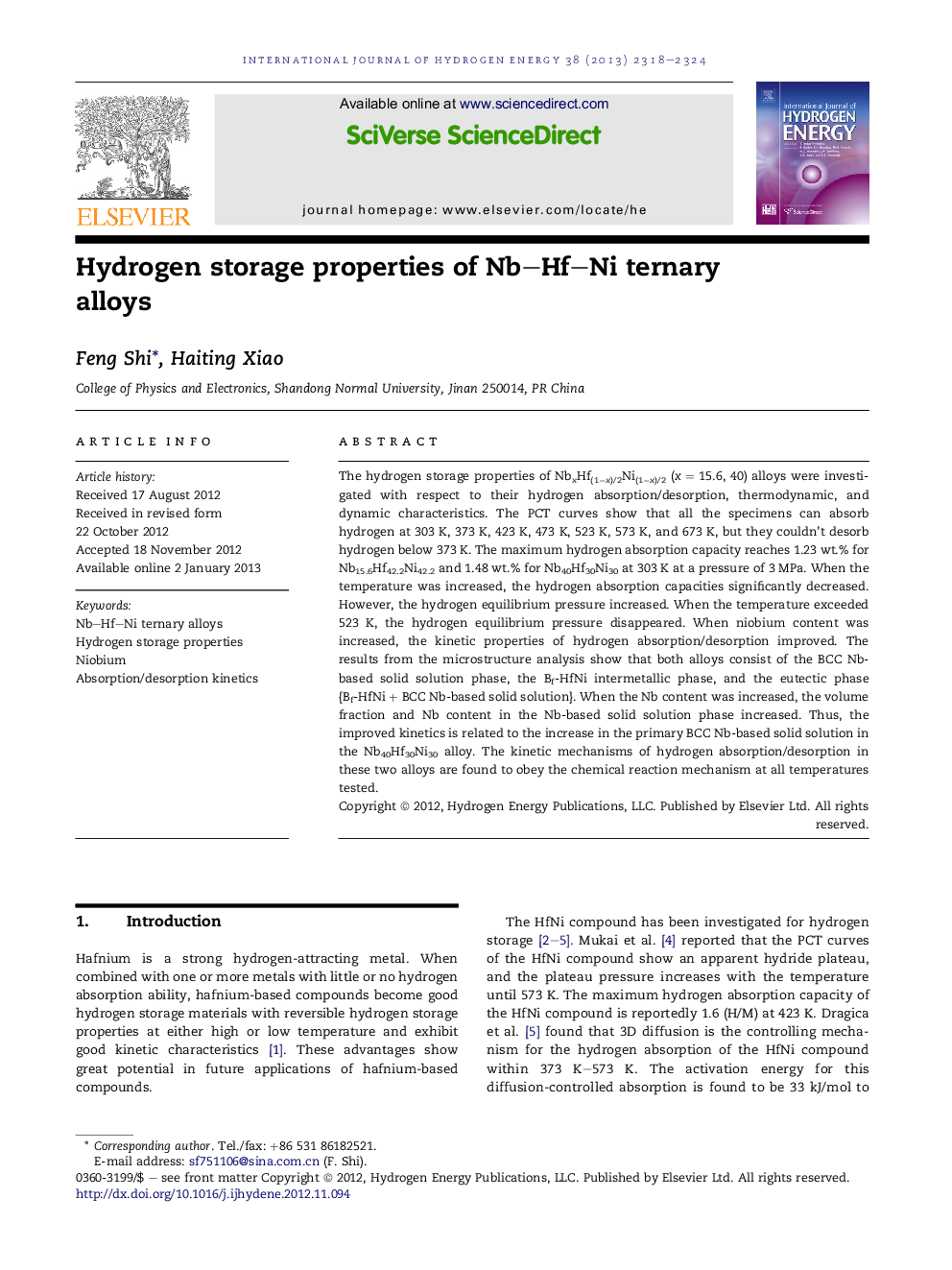| Article ID | Journal | Published Year | Pages | File Type |
|---|---|---|---|---|
| 1274095 | International Journal of Hydrogen Energy | 2013 | 7 Pages |
The hydrogen storage properties of NbxHf(1−x)/2Ni(1−x)/2 (x = 15.6, 40) alloys were investigated with respect to their hydrogen absorption/desorption, thermodynamic, and dynamic characteristics. The PCT curves show that all the specimens can absorb hydrogen at 303 K, 373 K, 423 K, 473 K, 523 K, 573 K, and 673 K, but they couldn't desorb hydrogen below 373 K. The maximum hydrogen absorption capacity reaches 1.23 wt.% for Nb15.6Hf42.2Ni42.2 and 1.48 wt.% for Nb40Hf30Ni30 at 303 K at a pressure of 3 MPa. When the temperature was increased, the hydrogen absorption capacities significantly decreased. However, the hydrogen equilibrium pressure increased. When the temperature exceeded 523 K, the hydrogen equilibrium pressure disappeared. When niobium content was increased, the kinetic properties of hydrogen absorption/desorption improved. The results from the microstructure analysis show that both alloys consist of the BCC Nb-based solid solution phase, the Bf-HfNi intermetallic phase, and the eutectic phase {Bf-HfNi + BCC Nb-based solid solution}. When the Nb content was increased, the volume fraction and Nb content in the Nb-based solid solution phase increased. Thus, the improved kinetics is related to the increase in the primary BCC Nb-based solid solution in the Nb40Hf30Ni30 alloy. The kinetic mechanisms of hydrogen absorption/desorption in these two alloys are found to obey the chemical reaction mechanism at all temperatures tested.
► Bf-HfNi phase is not sensitive to the increase in Nb content. ► When temperature increased, hydrogen absorption capacities decrease. ► When Nb content increases, maximum hydrogen absorption capacity increases. ► Enthalpy of Nb15.6Hf42.2Ni42.2 and Nb40Hf30Ni30 are −48.31 and −44.44 kJ/mol.
